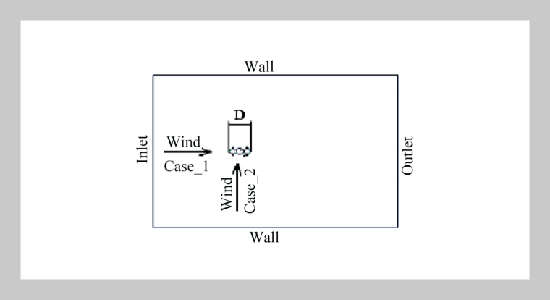Selvi Rajan. S This email address is being protected from spambots. You need JavaScript enabled to view it.1, Santhoshkumar. M2 , Lakshmanan. N3 , Nadaraja Pillai. S4 and Paramasivam. M5 1Scientist, Structural Engineering Research Centre, CSIR Campus, Taramani, Chennai – 600 113, Tamil Nadu, India
2Structural Engineer, Vibromech Engineers & Services ltd., Chennai, Tamil Nadu, India
3Director, Structural Engineering Research Centre, CSIR Campus, Taramani, Chennai – 600 113, Tamil Nadu, India
4PhD Research Scholar, Wind Engineering Research Centre, Tokyo Polytechnic University, Japan 243-0297
5PDF Research Scholar, Wind Engineering Research Centre, Tokyo Polytechnic University, Japan 243-0297
Received:
July 16, 2008
Accepted:
June 10, 2009
Publication Date:
September 1, 2009
Download Citation:
||https://doi.org/10.6180/jase.2009.12.3.01
In order to understand the physical phenomena of the wind flow over the typical launch vehicle, the flow was simulated using both Wind tunnel and Computational Fluid Dynamics (CFD). In the present study, tests were conducted on a 1:50 scaled model of a launch vehicle. The model was subjected to two wind conditions, wind flow normal to the shorter plan dimension θ = 0°, where the three main cylinders of the model were one behind the other and wind flow normal to the longer plan dimension, θ = 90°, where all the three main cylinders of the vehicle are subjected to direct wind pressure in the windward direction. Based on the CFD studies, the flow pattern and the force coefficients were derived. To validate these results, wind tunnel tests were carried out on a 1:50 scaled rigid and light-weight models respectively, for obtaining path lines and force coefficients. Results on streamlines obtained based on CFD simulation and wind tunnel experiments compared very well. The force coefficients in both directions were evaluated from CFD results showed good agreement with the corresponding measured values based on wind tunnel experiment.ABSTRACT
Keywords:
CFD Simulation, Boundary Layer Wind Tunnel, Launch Vehicle, Flow Visualization
REFERENCES
















